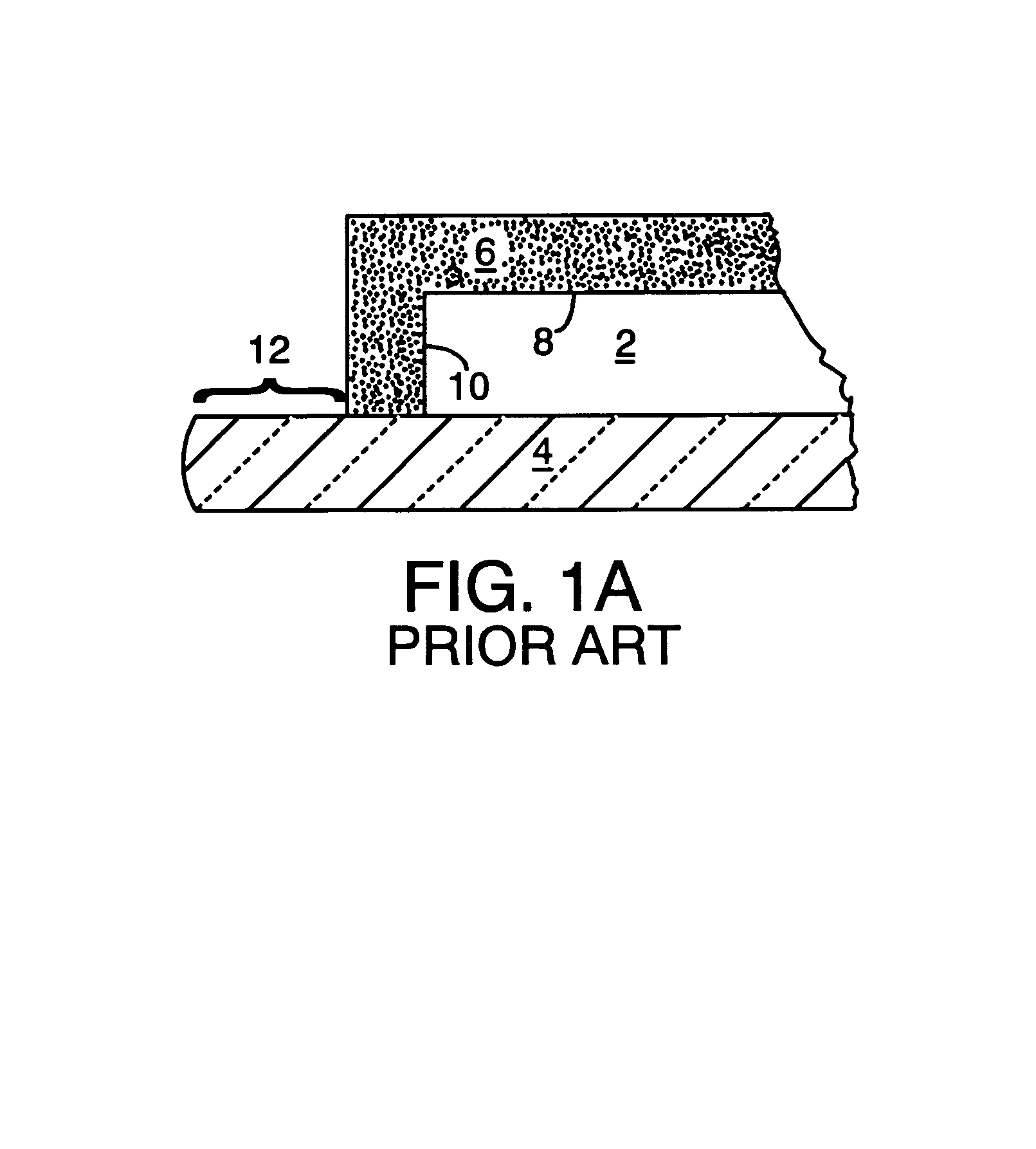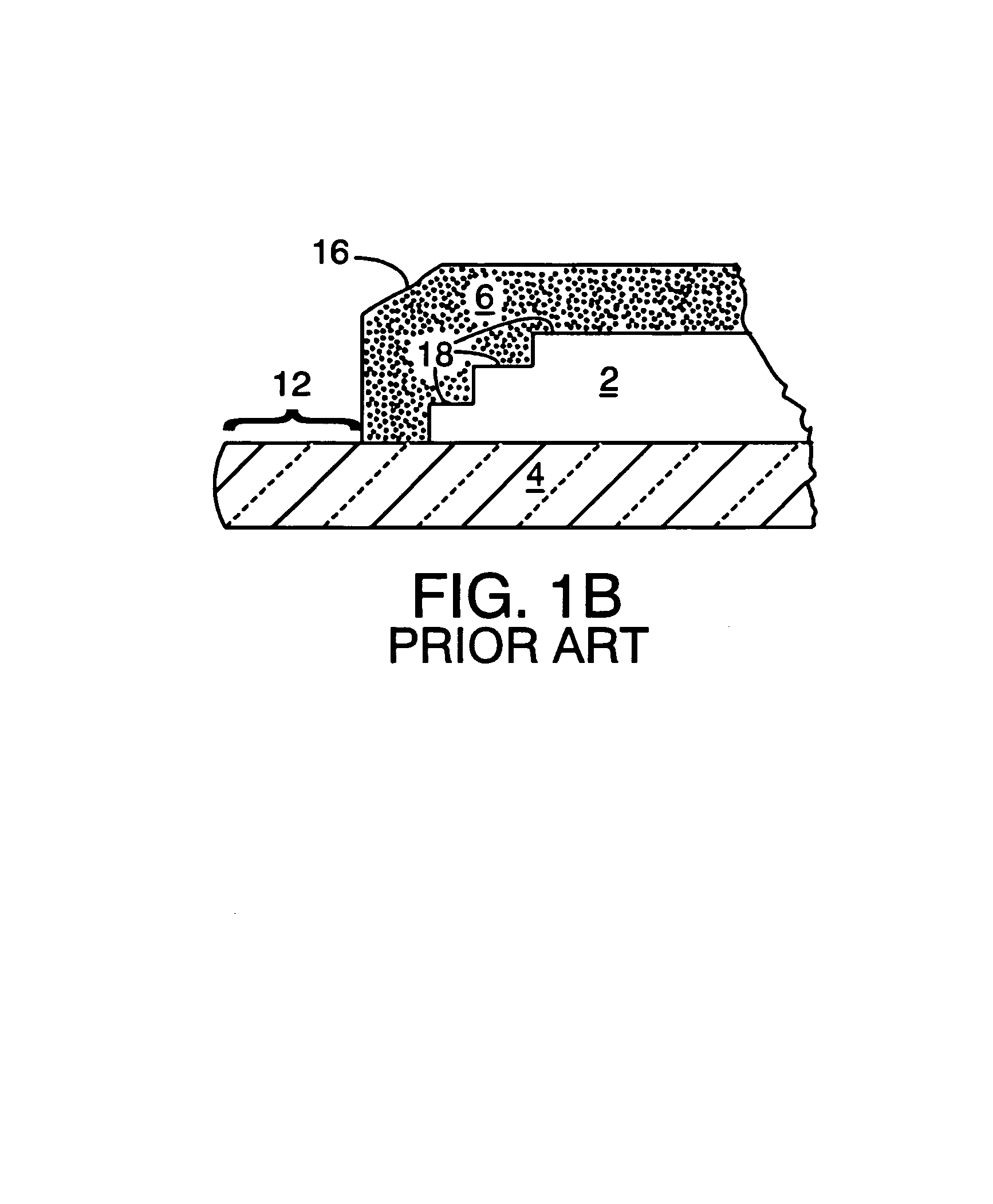Edge bead removal inspection by reflectometry
a technology of reflectometry and bead removal, which is applied in the direction of optical radiation measurement, semiconductor/solid-state device testing/measurement, instruments, etc., can solve the problems of affecting the accuracy of optical diffraction, and affecting the accuracy of multi-layer structures, etc., to achieve accurate multi-layer structures and low cost
- Summary
- Abstract
- Description
- Claims
- Application Information
AI Technical Summary
Benefits of technology
Problems solved by technology
Method used
Image
Examples
first embodiment
[0021]According to my inventive concept, a wafer is illuminated at the Brewster angle for silicon, and the reflected light image is observed in both s- and p-polarizations. In a first embodiment, the image acquired in p-polarization is subtracted from that acquired in s-polarization, yielding an “image difference”. Note that for the bare silicon region, there will be little or no p-polarized reflected light at the silicon Brewster angle, therefore the image difference will be essentially the same as the s-polarized image. In contrast, for the resist-covered region, the p-polarized light will be significantly reflected at the silicon Brewster angle, and the image difference will be significantly less bright than the s-polarized image. Sensitivity is maximized by using the image difference method. In this embodiment, identification of regions can be accomplished by thresholding the image differences, i.e, by assigning the characteristic that less than a certain difference is resist, a...
second embodiment
[0022]In a second embodiment, image differences are not created, but the p-polarized images are compared in the different regions, for light incident at a Brewster angle. For example, if the angle of incidence of the p-polarized light is the Brewster angle for silicon, the silicon regions will evidence little or no reflectance and will appear dark. In contrast, at that angle, there is significant reflectance from the resist-covered regions, which will appear considerably brighter than the silicon regions. Substantial contrast enhancement is thereby obtained using p-polarized light at the Brewster angle for silicon, as compared with the use of unpolarized light.
[0023]Both embodiments of this method therefore provide artificially enhanced image contrast between the bare silicon regions and the resist-covered regions. This enhanced contrast can help overcome the inherent noise present in the image near the wafer edge. It can also improve performance when multiple edge rings are present...
PUM
 Login to View More
Login to View More Abstract
Description
Claims
Application Information
 Login to View More
Login to View More - R&D
- Intellectual Property
- Life Sciences
- Materials
- Tech Scout
- Unparalleled Data Quality
- Higher Quality Content
- 60% Fewer Hallucinations
Browse by: Latest US Patents, China's latest patents, Technical Efficacy Thesaurus, Application Domain, Technology Topic, Popular Technical Reports.
© 2025 PatSnap. All rights reserved.Legal|Privacy policy|Modern Slavery Act Transparency Statement|Sitemap|About US| Contact US: help@patsnap.com



